Robert J. Stamps, The Sacrament of the Word Made Flesh (Wipf and Stock 2013); $ 39,- ($ 31,20 [web price])
In his book The Sacrament of the Word Made Flesh, Robert J. Stamps engages with the sacramental theology of Thomas F. Torrance. It was his doctoral dissertation at the University of Nottingham, co mpleted in 1986. It remained unpublished until 2007, when it was included in the Rutherford Studies in Contemporary Theology. And finally, in 2013 it was released in the USA by Wipf and Stock. The delayed date of publication seems not completely coïncidental, as the sacramental theology of T.F. Torrance didn’t catch much attention until the first decade of the 21th century. George Hunsinger’s The Eucharist and Ecumenism (2008), preceded by his important essay ‘The Dimension of Depth’ (2001), is dedicated to the memory of T.F. Torrance and Hunsinger’s sacramental theology is deeply influenced by Torrance. Paul Molnar wrote about the same subject in 2005, in an essay (‘The Eucharist and the Mind of Christ. Some Trinitarian Implications of T.F. Torrance’s Sacramental Theology’) and, to mention just one more example, Myk Habets devotes several pages to the same topic as part of his book Theosis in the Theology of Thomas Torrance (2009). These and other recent publications are not mentioned in Stamps’ book, as its conception predates these books and articles.
mpleted in 1986. It remained unpublished until 2007, when it was included in the Rutherford Studies in Contemporary Theology. And finally, in 2013 it was released in the USA by Wipf and Stock. The delayed date of publication seems not completely coïncidental, as the sacramental theology of T.F. Torrance didn’t catch much attention until the first decade of the 21th century. George Hunsinger’s The Eucharist and Ecumenism (2008), preceded by his important essay ‘The Dimension of Depth’ (2001), is dedicated to the memory of T.F. Torrance and Hunsinger’s sacramental theology is deeply influenced by Torrance. Paul Molnar wrote about the same subject in 2005, in an essay (‘The Eucharist and the Mind of Christ. Some Trinitarian Implications of T.F. Torrance’s Sacramental Theology’) and, to mention just one more example, Myk Habets devotes several pages to the same topic as part of his book Theosis in the Theology of Thomas Torrance (2009). These and other recent publications are not mentioned in Stamps’ book, as its conception predates these books and articles.
Stamps starts his study with an outline of ‘the theological and cosmological framework’ for Torrance’s eucharistic theology. This first chapter functions as a very concise introduction of Thomas Torrance’s view on theology in relation with (modern) science and its epistemological implications. Not surprisingly then, we find in this chapter much interaction between the positions of Torrance and Barth. Stamps does a good job in his exposition of Torrance’s emphasis on God’s self-revelation, his aversion of dualism, and so forth.
The second chapter starts with a brief ‘rationale’ for the subsequent outline of the discussion of Torrance’s sacramental theology. Stamps chooses here for a revision of Calvin’s approach in the Institutes (IV,XVII,1): Signification; Substance of Matter; Effect or Action. In my view this approach is not completely satisfactory. Of course, especially in his early writings, Torrance often refers to Calvin’s sacramental theology and he employed Calvin’s outline himself, ‘though with considerable difficulty’ (60). However, as Stamps rightly remarks, Torrance offers an incisive reinterpretation of the material. Stamps consciously indicates these reinterpretations in the subsequent chapters. But they don’t become structurally visible in this way. And that’s a pity. To be fair, the strength of Stamp’s approach is that the points of divergence can be marked, step by step.
Chapter 3 ‘Sacramental Matter and Action: the Objective Christological Ground and Potential for the Sacrament’ maps the interconnections between Torrance’s christology and sacramental theology. The key to this is found in his most comprehensive treatment of eucharistic theology: “The Paschal Mystery of Christ and the Eucharist’. His christological emphasis on the homo-ousios is the key for the interpretation of his sacramental theology. That has deep epistemological implications: ‘for God cannot be known in the revelatory ‘sacramental relation’, either in word or formal sacrament, except from the integrity of his incarnation.” (99). Moreover: “the worship of Christ is the ground for the Church’s worhsip. We can also understand why the Eucharist in his theology, answering as it does the worship of Christ, should be central to the life of a reconstituted, new humanity.” (109). It is this position that makes Torrance’s contribution unique, pointing to, what George Hunsinger rightly called, the ‘dimension of depth’.
While chapter 3 is the heart of the book, in my opinion, chapter 4 is less convincing: ‘Sacramental Effect: the Subjectification of the Objective Christological Reality’. The subtitle indicates the problem already. According to Stamps “Calvin dealt with sacramental action and effect together in his outline, whereas Torrance’s sacramental theology separates the effect from the action” (144). I don’t think so. In Conflict and Agreement (1960) he makes the distinction between the ‘action of Christ’ and ‘its effect in our reception of it’. But, as Stamps rightly says, “[t]his does nog designate two distinct actions” (ibid.). But then he adds “but [it designates, AT] the difference between Christ’s formal action and its subjectification within the Church” (ibid.). To be sure, Stamps is a very careful ‘exegete’ of Torrance. For a few lines later he writes that Torrance elsewhere (in his shorter article ‘The Paschal Mystery of Christ and the Eucharist’ in The Liturgical Review (1976) “treats these two aspects of our sacramental communion specifically as the Real Presence and the Eucharistic Sacrifice. Therefore, we shall discuss Sacramental Effect under these two headings” (145). Unfortunately, he seems to be unaware of the tension between the title of this chapter and the subheadings. The chapter offers for that matter brief comparisons with Luther’s and Calvin’s sacramental theologies (partly in the footnotes) that are right on target.
The last chapter is called: “An Appraisal of Torrance’s Eucharistic Theology with Open Questions”. Stamps refers in the beginning of this chapter to an personal interview he had with Thomas Torrance.
“When asked in 1985 what he would change if his earlier works on the Eucharist could be rewritten, Torrance stated that he would like to alter their context, i.e. not to discuss the issues so much from the perspective of the Reformation, as from that of the Eastern Fathers.” (240-241)
In the light of this quote, it becomes even more puzzling why Stamps chose to make Calvin’s approach leading for the outline of Torrance’s sacramental theology. He gives the answer by arguing that – in the end – Torrance’s eucharistic theology “finally ought not to be judged by what it aspires to be, but by what it actually is, a Eucharist [sic!] in the Reformed tradition operating from a highly developed christology richly informed by patristic sources” (244). Stamps notes in  passing that (especially the early) Torrance is in some respects heavily indebted to Karl Barth (“an ‘actualist conception of God’s Word” (250)), but in the end, his analysis of Torrance’s sacramental theology boils down to the dilemma: either Calvin or Eastern Orthodoxy. That seems to me a serious flaw in his analysis. Torrance’s sacramental theology certainly isn’t purely Barthian, but can’t be properly understood by omitting the Barthian ‘overtones’ in the thought of Tom Torrance.
passing that (especially the early) Torrance is in some respects heavily indebted to Karl Barth (“an ‘actualist conception of God’s Word” (250)), but in the end, his analysis of Torrance’s sacramental theology boils down to the dilemma: either Calvin or Eastern Orthodoxy. That seems to me a serious flaw in his analysis. Torrance’s sacramental theology certainly isn’t purely Barthian, but can’t be properly understood by omitting the Barthian ‘overtones’ in the thought of Tom Torrance.
This is not to deny that Stamps offers in his book a thorough study of the sacramental theology of Thomas F. Torrance. As indicated, its strenght lies in the ‘exegetical’ reading of all the relevant texts of Torrance’s work. Its weakness is its systematic presentation and evaluation. But for sure: anyone who is on his way to study Torrance on the sacraments, will have to read this book and will definitely find it useful.
I would like to thank Wipf and Stock Publishers for providing the review copy!
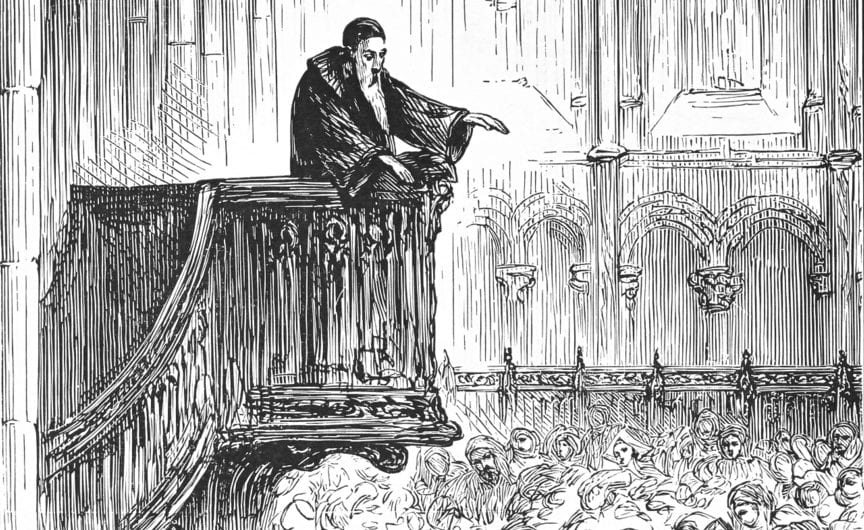

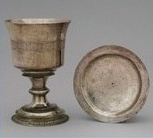
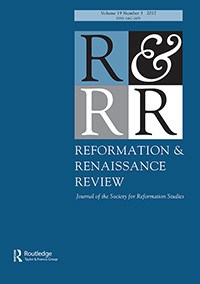 I’m happy to announce the publication of my article “‘Naturally More Vehement and Intense’: Vehemence in Calvin’s Sermons on the Lord’s Supper”, in Reformation & Renaissance Review, vol. 20,1 (2018), 70-81. The online (open access!) and printed versions are available at the RRR’s
I’m happy to announce the publication of my article “‘Naturally More Vehement and Intense’: Vehemence in Calvin’s Sermons on the Lord’s Supper”, in Reformation & Renaissance Review, vol. 20,1 (2018), 70-81. The online (open access!) and printed versions are available at the RRR’s 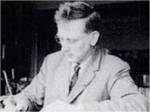 : the Rev. Dr. Thomas Henry Louis Parker. He died on Monday April 25th of this year, at the blessed age of 99 years. Parker was an outstanding scholar, both versed in Calvin Studies as well as in Barth Studies. His death has not attracted the same amount of attention as John Webster’s, but I gathered it was mentioned on Facebook, and also on the website of
: the Rev. Dr. Thomas Henry Louis Parker. He died on Monday April 25th of this year, at the blessed age of 99 years. Parker was an outstanding scholar, both versed in Calvin Studies as well as in Barth Studies. His death has not attracted the same amount of attention as John Webster’s, but I gathered it was mentioned on Facebook, and also on the website of 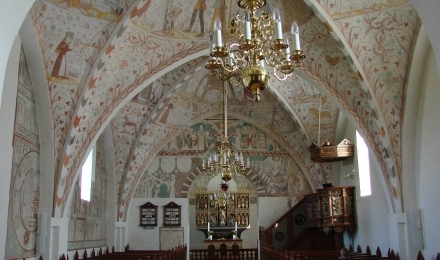
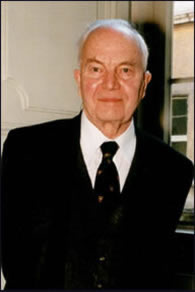
 offerings in the OT are memorials before God. It is in that sense we have to think about the Eucharist. As Calvin explains in his comments on Numbers 19: Christ is our Memorial and we offer Christ daily to the Father. And that’s what we do in the Eucharist. We are participants in Christ’s sacrifice.
offerings in the OT are memorials before God. It is in that sense we have to think about the Eucharist. As Calvin explains in his comments on Numbers 19: Christ is our Memorial and we offer Christ daily to the Father. And that’s what we do in the Eucharist. We are participants in Christ’s sacrifice.


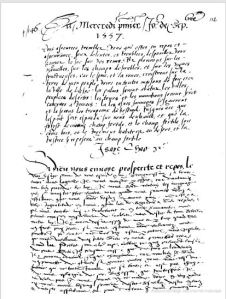




 ateriality (Religious Studies). Van den Hemel’s approaches Calvin’s eucharistic theology from a semiotic angle. That seems to me a very promising route. At the same time, Van den Hemel turns out to be theologically well informed, acquainted with the books of Paul Helm, Heiko Oberman, David Willis and Alister McGrath. He highlights the ‘extra-calvinisticum’ as an important interpretive key to Calvin’s semiotics of the Lord’s Supper. Rightly so, I think. In fact, Van den Hemel’s contribution is part of a larger picture. It strikes me that there is a lot of attention in Literary Studies for Calvin’s theology of the Lord’s Supper. The amount of references to his sacramental theology in English Renaissance Studies (Shakespeare, John Bale, etc.) for example is amazing. But the interest is one-sided. So far, there seems to be hardly any readiness within Calvin research to learn from the field of Literary Studies. That is a pity, according to me. In fact, it gives me food for thought that some of the most promising recent contributions I read about Calvin’s theology of the Lord’s Supper stem from non-theologians. It might open new avenues in Calvin research.
ateriality (Religious Studies). Van den Hemel’s approaches Calvin’s eucharistic theology from a semiotic angle. That seems to me a very promising route. At the same time, Van den Hemel turns out to be theologically well informed, acquainted with the books of Paul Helm, Heiko Oberman, David Willis and Alister McGrath. He highlights the ‘extra-calvinisticum’ as an important interpretive key to Calvin’s semiotics of the Lord’s Supper. Rightly so, I think. In fact, Van den Hemel’s contribution is part of a larger picture. It strikes me that there is a lot of attention in Literary Studies for Calvin’s theology of the Lord’s Supper. The amount of references to his sacramental theology in English Renaissance Studies (Shakespeare, John Bale, etc.) for example is amazing. But the interest is one-sided. So far, there seems to be hardly any readiness within Calvin research to learn from the field of Literary Studies. That is a pity, according to me. In fact, it gives me food for thought that some of the most promising recent contributions I read about Calvin’s theology of the Lord’s Supper stem from non-theologians. It might open new avenues in Calvin research.